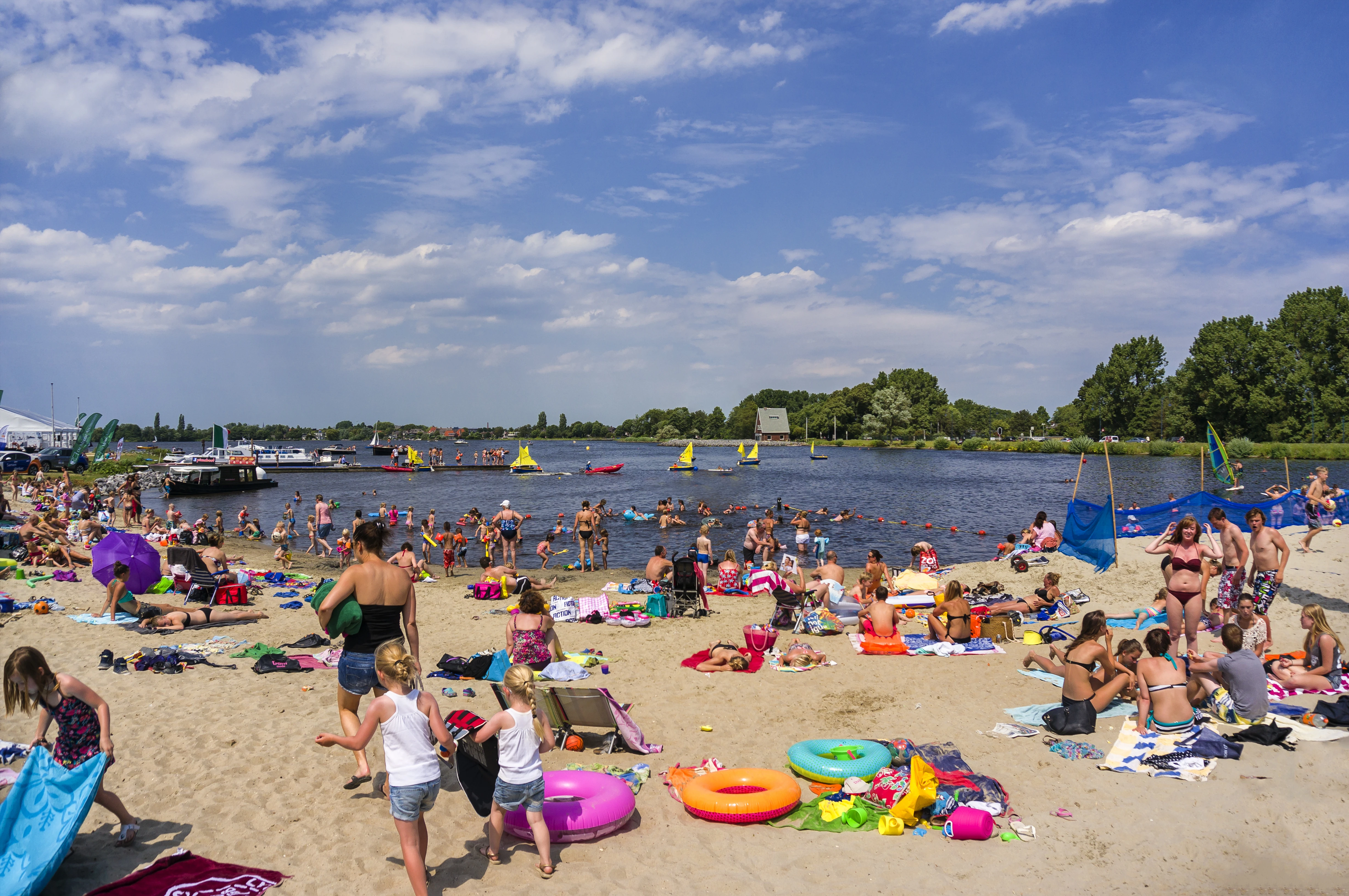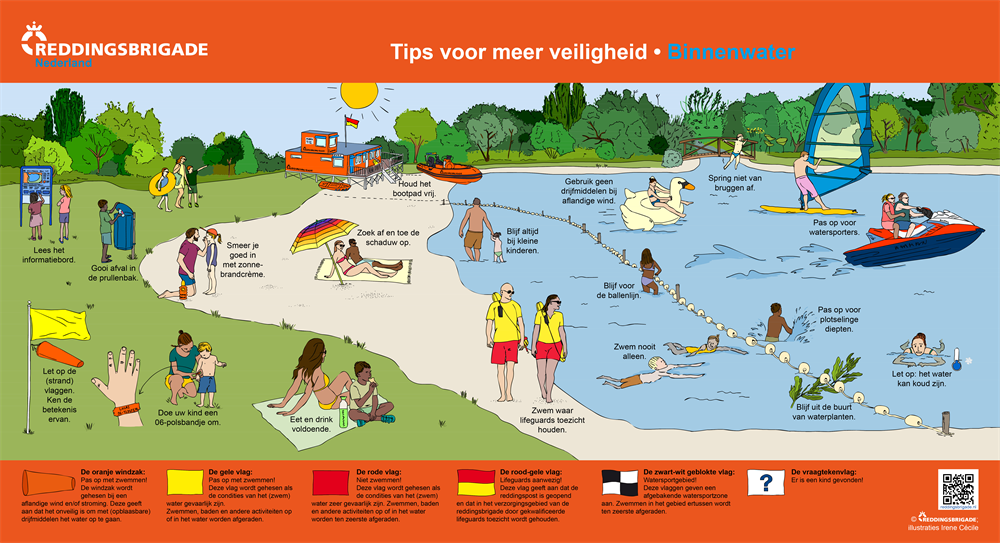
What you need to know when swimming in nature
Share on social media:
When the weather in the Netherlands is good, people like to take a dip in the water to cool off. If you are going swimming, pay close attention to the risks of swimming in natural water.
Only swim in natural water if you know how to swim
There are many different places in The Netherlands where you can swim in summer. Only go swimming if you know how to swim.
Choose swimming spots where the water quality and safety are monitored. Some waters are not clean or too dangerous to swim in.
Beware of rip currents and strong tides when swimming in the sea
There are riptides in the sea. A riptide is a strong current in the sea and this can be dangerous.
Do not try to swim against the strong current of a riptide. It is almost impossible and you will only get exhausted. Go sideways, level with the shore, with the current until you feel the current weaken.
Riptides are hard to spot. But you can look out for a few things, such as:
At a certain spot in the sea, you can see the waves are less high
At one spot in the sea there appears to be a stretch of deep water with a shallower stretch in between
There are also undercurrents or upper currents in the sea. These are the hazards:
An undercurrent can quickly pull you away from shore, toward the open sea. Swimming back is difficult. You quickly become exhausted.
An upper current can also drift you away from shore, but less strongly than undercurrent. An upper current can drive you toward objects or boats, increasing the risk of collision.
Again, try not to swim against the current. Try to swim sideways to the shore.
Watch out for ships in rivers and canals and don't jump from bridges
In rivers and canals, there are large boats that pose a risk to swimmers. Large boats often struggle to see swimmers. Also, boats cause strong currents. The water is pushed away and comes back with force, which can carry you away.
Jumping from a bridge into a canal or river is also dangerous. It is difficult to see how deep it is in the murky water and there may be things on the bottom.
Here you can swim safely in nature
You can take swimming lessons to learn how to swim
Because there is a lot of water in the Netherlands, Dutch children start swimming lessons at an early age. Most Dutch children and adults have a swimming certificate. This reduces the risk of accidents in the water.
Swimming lessons for children
Municipalities can help you pay for swimming lessons for your children. The regulations and conditions may vary from one municipality to another. Your municipality can give you information about this.
Swimming lessons for adults
You can also take swimming lessons as an adult. Municipalities can help you pay for swimming lessons. The regulations and conditions may vary from one municipality to another. Your municipality can give you information about this.
Visit 'Alles over zwemles' for swimming lessons near you
The Dutch Rescue Brigade is there for safety in the water
The Dutch Rescue Brigade is an organisation dedicated to water safety and assisting in case of accidents. You will often see the Dutch Rescue Brigade on the beach, where staff and volunteers keep an eye on everyone.
The Rescue Brigade has made a poster explaining the dangers of swimming in nature. This includes an explanation of the colours of the flags you see on the beach.
